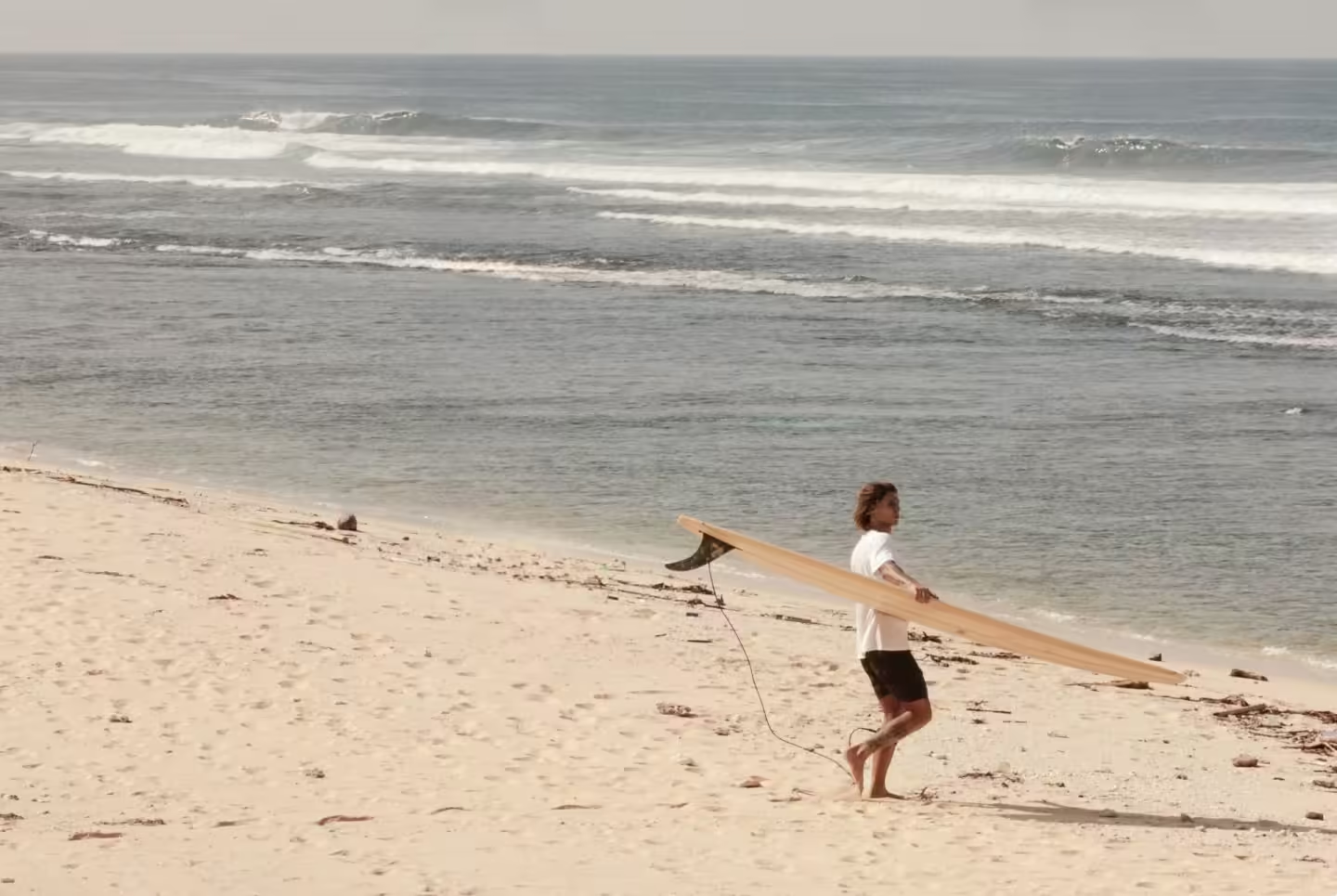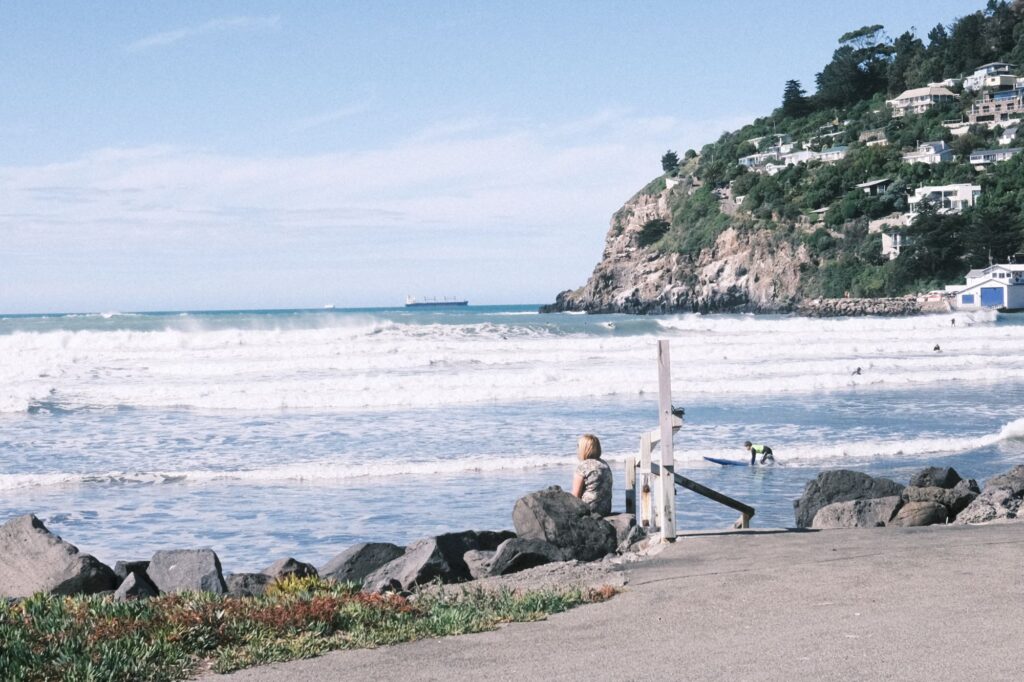What Tide Is Best For Surfing?
As you might have guessed, nailing the best tide for surfing is a pretty big deal. But don’t go thinking it’s as easy as putting on sunscreen.
The tides play a crucial role in determining the quality of the waves and the overall surfing experience.
Understanding the different types of tides and how they affect the surf can make all the difference between a great session and a frustrating one.
Add to it that determining the optimal tide can be challenging and varies from location to location, making it difficult to provide a straightforward answer.
Therefore, rather than offering definitive solutions, what is necessary is to gain the knowledge and expertise to make informed decisions about tide conditions when hitting the waves.
In this post, we’ll explain how tides work and affect the surf, and what should be the optimal time for you to surf.
What Are Tides And What Causes Them
Tides are caused by the gravitational pull of the moon and the sun on the Earth’s oceans. Yes, I’m not making this up, and when I first learned that the moon is responsible for the tides I was blown away.
As the tide rises and falls, it creates changes in the depth and movement of the water, which in turn affects the surf conditions.
Now let’s differentiate, there are two main types of tides: spring tides and neap tides.
Spring tides occur when the sun, moon, and earth are in alignment, creating a higher than usual tidal range aka high tide.
Neap tides, on the other hand, occur when the sun, moon, and earth are at right angles, resulting in a smaller tidal range, aka low tide.
How Tides Affect Surfing
The tides play a significant role in determining the quality of the waves and the overall surfing experience.
As the tide rises and falls, it creates changes in the depth and movement of the water, affecting the surf conditions regularly.
There are three ways that the tide can influence a surfing session, let’s explore and understand all of them.
Water Depth
The depth of the water is one of the most important factors that determine the quality of the surf.
The best waves are usually found in water that is shallow enough to allow the waves to break cleanly but deep enough to avoid the danger of hitting the bottom.
During high tide, the water is deeper, which can create larger waves that break farther from shore.
On the other hand, during low tide, the water is shallower, which can cause the waves to break closer to shore and create a faster, more hollow ride.
Let’s take a moment to picture a spot with a substantial tidal range, such as Huntington in California, which boasts a tidal range of over 5 miles.
At this location, the low tide line can be up to 200 miles further out to sea from the high tide line.
This significant difference in water depth has a profound impact on how waves break, which is particularly noticeable when we introduce a reef into the equation.
During low tide, the reef appears as a rocky outcrop, completely exposed and with no waves breaking.
However, as the tide begins to come in, the water covers the reef, causing waves to break and become surfable.
This effect is not limited to reefs, but also happens at every beach break and sandbank, with water depth playing a critical role in shaping the waves.
Water Movement and Rips
Not only does the depth of the water determine how powerful the waves are, but also its direction has a significant influence on their movements.
The movement of the water is another factor that affects the surf conditions and it’s essential to understand how they differ.
Incoming tides, also known as a rising tide or flood tide, occur when the water level is increasing towards high tide.
This movement of water towards the shore can create a more powerful and consistent wave, as the water pushes against the bottom and causes the wave to break more uniformly.
During an incoming tide, the water level rises, and the waves break more evenly, creating ideal conditions for surfers.
On the other hand, outgoing tides, also known as ebbing tides, occur when the water level is decreasing towards low tide.
This movement of water away from the shore can create more unpredictable waves and a choppier surface.
Outgoing tides can also create rips, which are powerful currents that can quickly pull surfers out to sea.
Because of that, outgoing tides make it more difficult for surfers to maintain control.
Best Tides For Surfers
So, what are the best tides for surfers? As mentioned earlier, this can vary depending on the location and other factors such as wind and swell direction.
However, as a general rule, and you might guess it already, an incoming tide and a high tide are the best for surfing.
During an incoming tide, the water is rising, which can create steeper, more powerful waves.
High tide can also be great for surfing because it produces waves that break closer to shore and often have a more consistent shape and size.
And still, low tide can also be good for surfing, especially for beginners or those looking for smaller, more manageable waves.
When there’s low tide, the water is shallower, which can create faster, more hollow waves that break closer to shore.
Having said that, it is important to always be aware of the potential dangers of shallow water and rips during low tide.
Keep in mind that each spot has its unique characteristics and some surf spots may have better waves at low tide, while some may be more suitable for surfing at high tide.
Final Thoughts
Understanding the different types of tides and how they affect the surf can greatly improve your surfing experience.
The best tide for surfing can vary depending on the location and other factors, but as you already learned, an incoming tide and a high tide are the best for creating the ideal surf conditions.
Remember to always check surf reports and talk to local surfers or instructors to get a better idea of the ideal tide conditions for a particular surf spot, and stay safe by being aware of potential hazards such as rips and shallow water during low tide.



